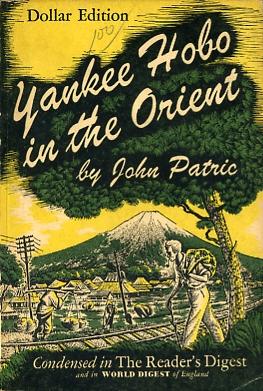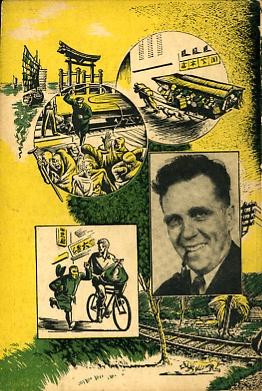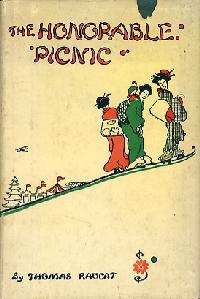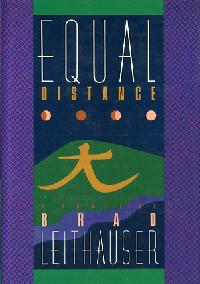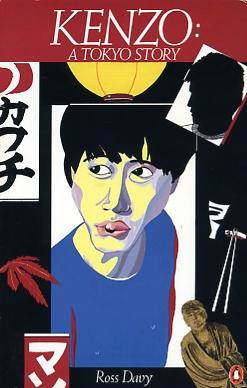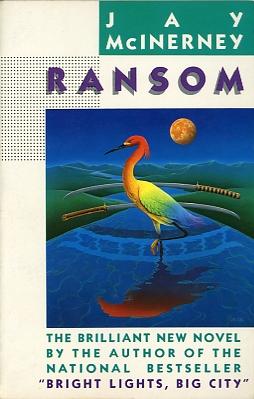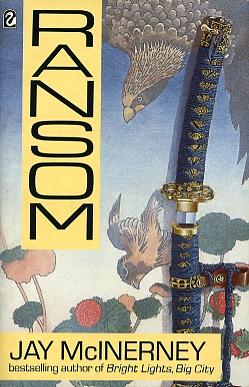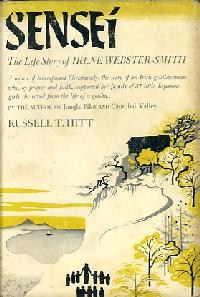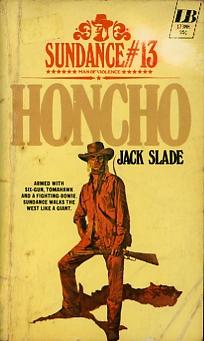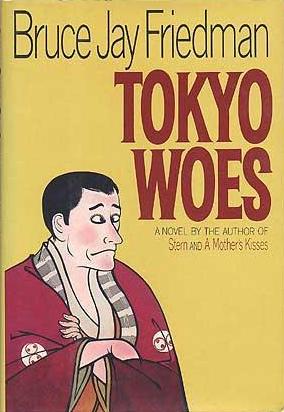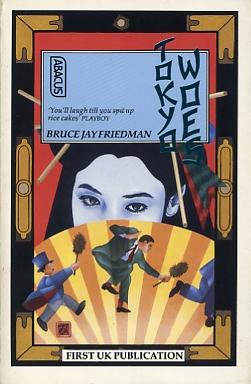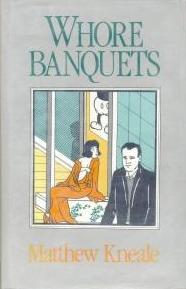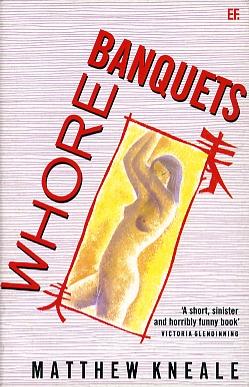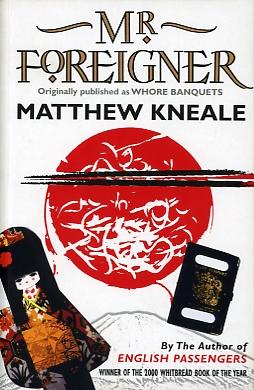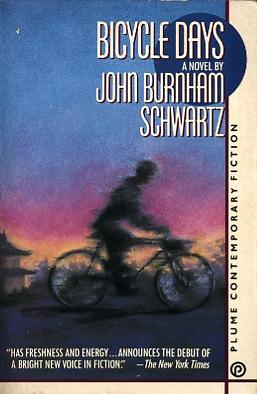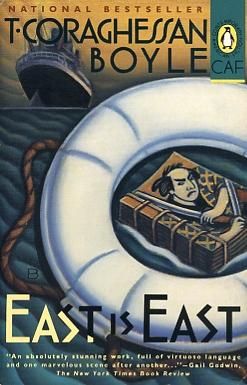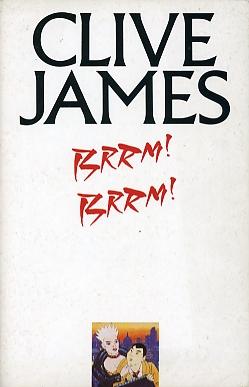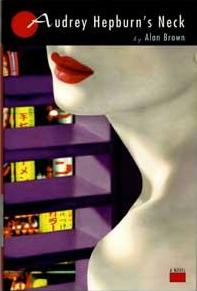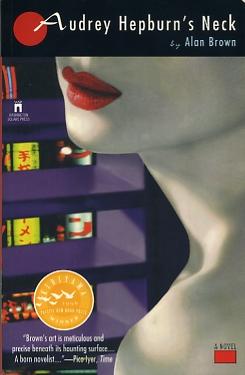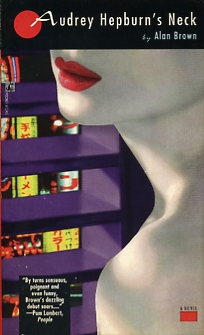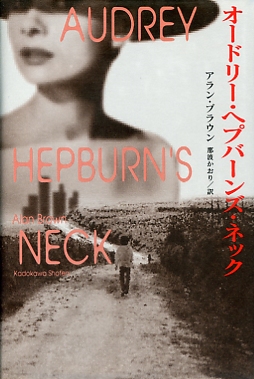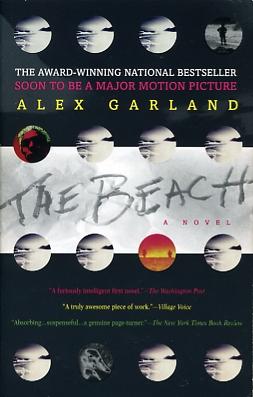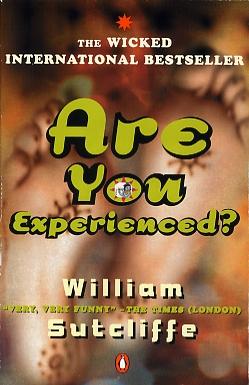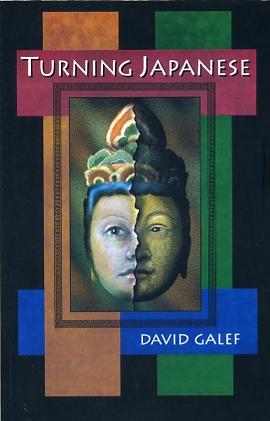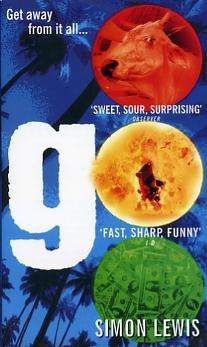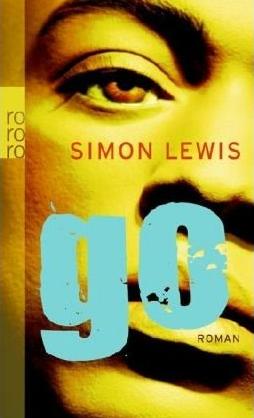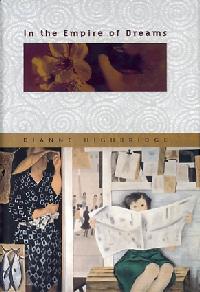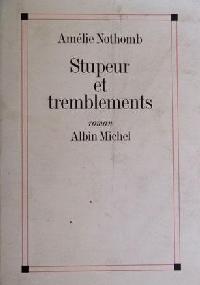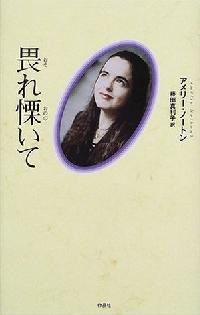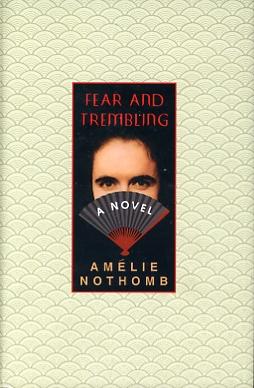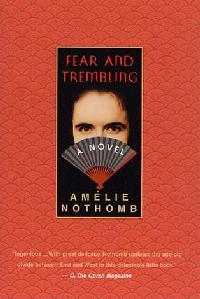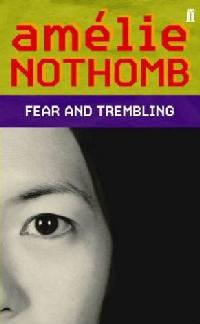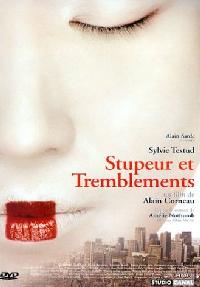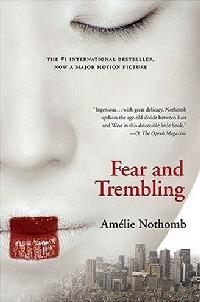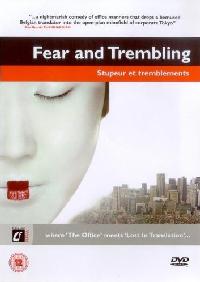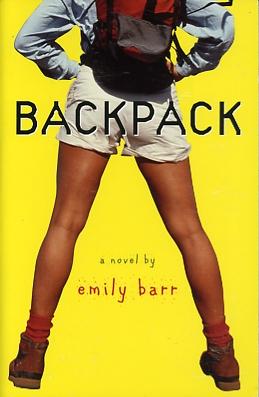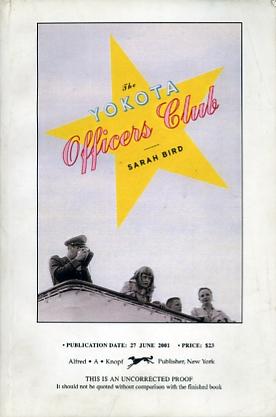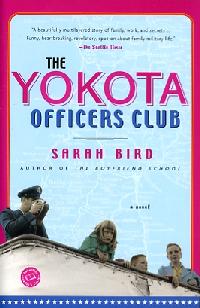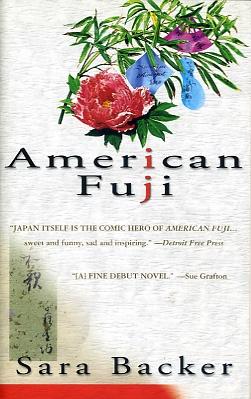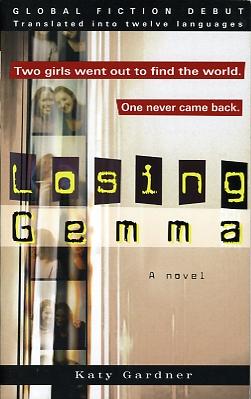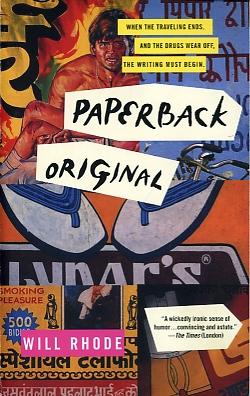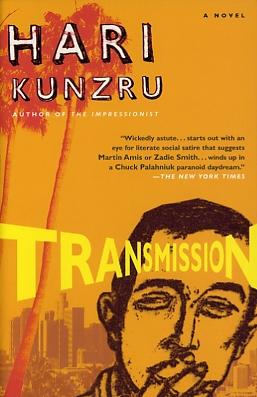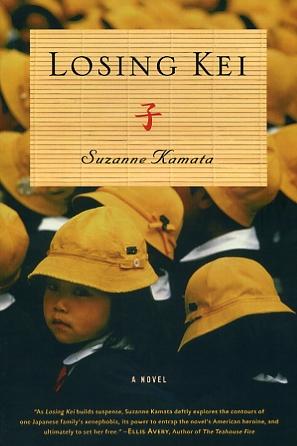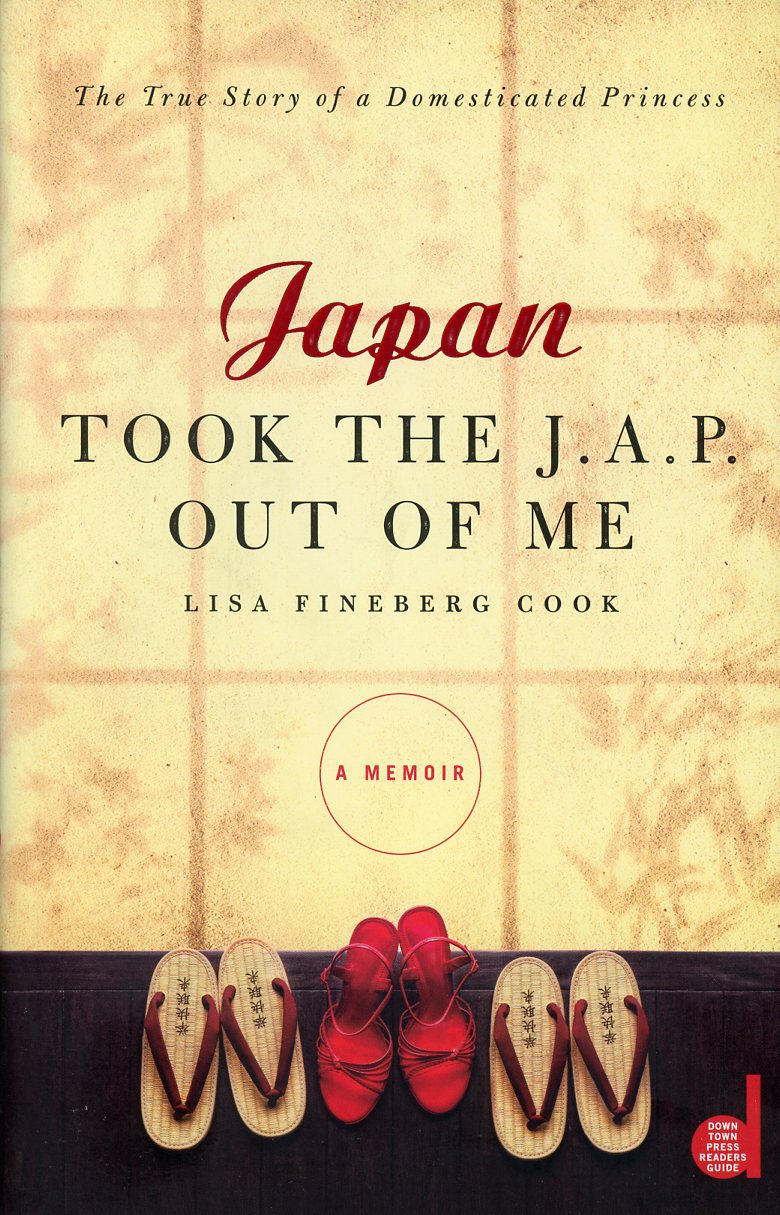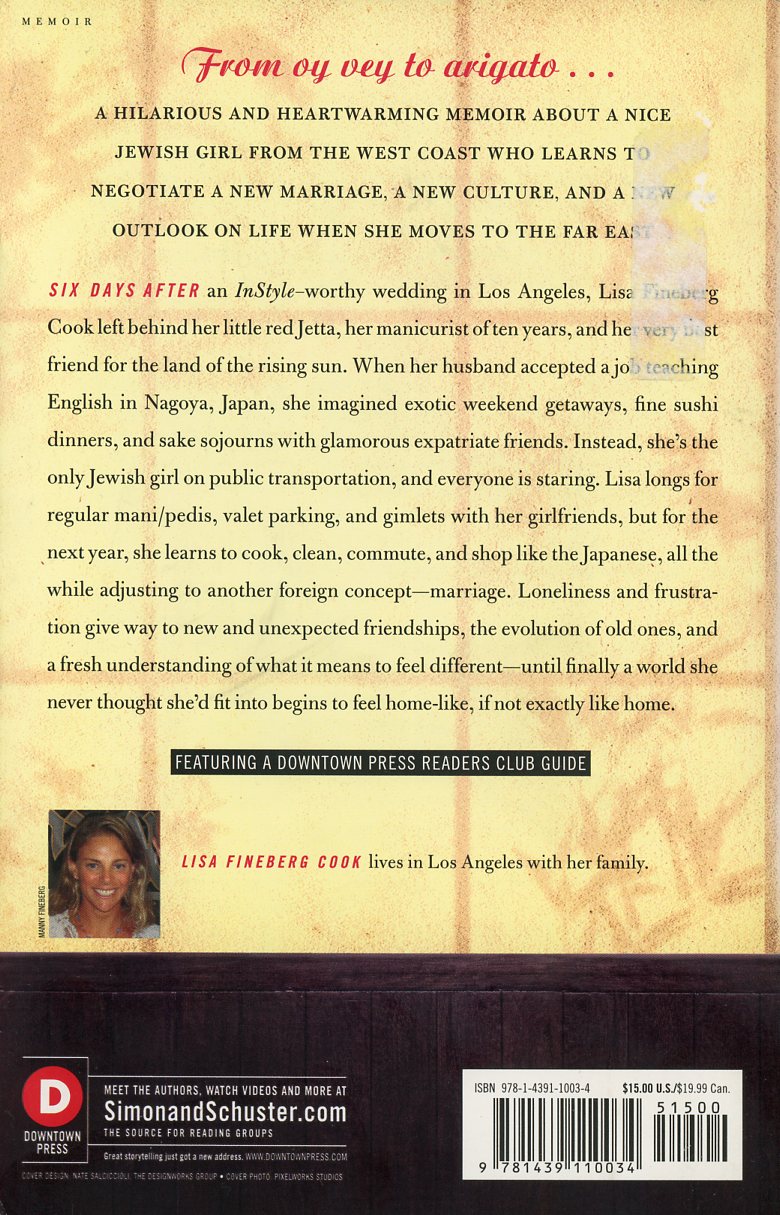Backpackers, sojourners, settlers
Fleeing demons and pursuing happiness at home and abroad
By William Wetherall
First posted 15 August 2006
Last updated 10 August 2023
Wanderlusts Yankee hobo • Backpack fables • Illusions • Hippies, slakers, bratpackers • Going native • Personality • Celebrity writers
Titles by author Reviewed below in chronological order
Writers as wanderlusts
Writers are wanderlusts. If biographers, they write about their own or other people's actual travels. If novelists, they dramatize their own real or imagined experiences in other countries through fictional characters.
In real life and fiction, most travellers never find what they are looking for. That would be boring. The whole point of venturing across a mountain or sea for the first time is to see and do things one has never seen or done.
All travellers to unfamiliar places have expectations based on what they have heard or read. Prior knowledge about local customs, like taking off shoes at entrances, can be useful. The traveller may not have heard about removal of slippers before entering a tatami room in Japan, or about toilet slippers in some Japanese homes, inns, and restaurants.
Whatever rules generally hold in a given society, though, there are always local and individual variations and exceptions. Flexibility -- the ability to adapt to new conditions -- is a must.
John Patric 1945Yankee Hobo in the OrientJohn Patric's Yankee Hobo in the Orient (September 1945) is a highly revised postwar edition of his wartime book, Why Japan Was Strong (May 1943). While not fiction, Patric's account of his travels in Japan and China represent -- as the covers suggest -- the romantic nature of wanderlusts who seek adventure if not enlightenment in other countries. 1943-1944 wartime editionsThe cover art of the U.S. edition of the 1943 wartime version shows farmers working in terraced fields. The year before the book was published, Japan's Navy had been dealt a serious blow at the Battle of Midway. While the war was far from over, American media portrayed Japan as losing ground, hence the "was strong" in the title. The blurb on the cover suggests that Japan was "poor but fugal and warlike" hence its strength, while the wealth of countries like the United States had blindsided them to the threat of Japanese attacks. 1945 postwar revised editionThe cover art of the postwar revision, which Patric privately published in the United States, baits readers with romantic images of Japan's countryside, contrasted with absurd caricaturizes of toil and brutality.
Dust jackets of Why Japan Was StrongThe back of the dust jacket of the 1943 1st Doubleday (American) edition (shown above) appeals to readers to buy war bonds. The dust jacket of a later edition makes the following declaration (my transcription from scan of jacket by antiquarian book dealer).
Publicity in Yankee Hobo in the orientThe privately published postwar revision as Yankee Hobo in the Orient is full of publicity for both this edition and the earlier Why Japan Was Strong. The copy in Yosha Bunko is inscribed with a fountain pen on the front free fly page as follows.
To Helen & Dean Allen The copy includes 2 bookmarks advertising Why Japan Was Strong as having "140,000 words of which 3,000 words appeared in The Readers Digest. A card was enclosed for ordering "still another copy of Yankee Hobo in the Orient autographed as a gift and mailed postpaird to: _______" directly from Patric at his Frying Creek address, for $2.50 cloth cover and $1.00 soft cover. |
Backpack fables old as wine
There have always been rootless young people and curious elders who have left their cradle countries on foot or ship, survived their journeys to distant lands, and written about their travels and adventures in diaries, biographies, and even fiction. Much of what we think we know about Japan, say, before history began to be recorded in Japan, was written by Chinese geographers who had heard about Japan from people who had travelled there.
Europeans would not have known as much as they thought they knew about Asia were it not for the travels and journals of Marco Polo (1254-1324). Classical Greek and Roman, and more contemporary Arab understandings of Asia, also began to become more available in Europe from about Marco Polo's time.
Europeans who witnessed parts of Asia from the 16th through the early 19th centuries wrote about what they thought they saw, as did some Asians who traveled to Europe. From the middle of the 19th century, East Asia joined other parts of Asia, the Pacific, the Mediterranian, Africa, and the Americas as playgrounds for European and US colonial adventurism and gunboat diplomacy. Not a few Euroamerican entrepreneurs, missionaries, diplomats, and scholar and teachers who had traveled or resided in China, Korea, or Japan, some wearing more than one hat, recorded their experiences in "I was there" travelogues and novels.
Illusions of "real" and "correct"
The information in the narratives of early travellers was probably no less accurate than contemporary maps. As the detail and quality of maps increased, so did the amount if not the accuracy of information about other countries in books.
Facts and knowledge, however, do not add up to understanding. Hence the gap today between very precise GPS coordinates for, say, Japan -- and the shifting and conflicting views of Japan which, at any given time, are politically embraced as correct in Tokyo, Seoul, Pyongyang, Beijing, Washington, D.C., London, or in Okinawa for that matter.
Humans are particularly vain when it comes to their knowledge about other countries they have visited. They board the plane heading for the country, their heads full of whatever they have managed to pick up from travel guides or friends. Two weeks, two months, two years, twenty years later they come back experts.
Every year, about 1.5 million people whose native tongue is English visit Japan. If just 1 in 10,000 were to start a novel about their experiences, and if only 1 in 10 of these wannabe Lafcadio Hearns were to finish and publish their novel, we would have about 15 novels a year like Jay McInerney's Ransom (1985), Matthew Kneale's Whore Banquets (1987), and John Burnham Schwartz's Bicycle Days (1989). Most would not be nearly as readable as these three novels, and many of them would appear on Amazon.com as publications of vanity POD presses.
Hippies, slakers, bratpackers
The hippies of the 1960s are in some sense the beginning of what soon became the "slaker" or "bratpacker" generation, which has grown with cheaper and faster air travel. Not only has it become easier on the pocket book, calendar, and body for young people to venture abroad, but book stores and kiosks are full of up-to-date travel guides to corners of the world Magellan never heard of.
To be continued.
Going native
Forthcoming.
"Out of their own personality"
In blurbs and commentary on English fiction set in Asia, a lot is made about "culture" because that is what sells. But "culture" is a thought-terminating concept that has little to do with real life. Better authors create characters who, as in real life, swim or sink according to their personal qualities, not anything so vague and impersonal as "culture".
Kipling himself expressed this best in words when he concluded: "But there is neither East nor West, Border, nor Breed, nor Birth, When two strong men stand face of face, tho' they come from the ends of the earth!" Marian Bower and Leon M. Lion (1878-1947) elaborated on this fundamental truth in The Chinese Puzzle (1919), a novelistization of the play (1918) and later the film (1932) by the same name, staring Leon M. Lion as the Marquis Marquis Chi Lung (page 7, underscoring mine).
The Far East came to Roger by inheritance. His father, Sir Arthur de la Haye, was so pre-eminently the authority on Celestial matters, that the whole of British diplomacy in China seemed to hang on his shoulders. England never lends her representatives one ounce of unnecessary strength. They have to impress out of their own personality. If they make bricks without straw when their confreres of Russia, or Germany, are provided with substntial sheaves, then they have done no more than their duty; if thei fail, the difficulty of their situation provides no estenuating circumstance. Another man is sent, and then another, until one turns up with such a combination of the essential qualities, that he effects marvels as if they were commonplaces.
"Sir Arthur de la Hay was such a man" and so too was Roger de la Haye, who "never had any other thought than to follow his father" since "The East runs in families" (page 7). So thoroughly had "Oriental education" triumphed over "Western inheritance" in Roger's develpment that, in Roger's mind, women had been relegated to "the position of 'honorable baggage'" as was the "accepted Chinese attitude" (page 8).
Richard Lloyd Parry on celebrity writers
"When literary celebrities have alighted in Japan, the results have usually been disastrous," wrote Richard Lloyd Parry, a resident of Japan since 1995 and the Asia Editor for The Times, in the preface of his review of Donald Richie's The Japan Journals: 1947-2004, edited by Leza Lowitz (Stone Bridge, 2006).
Parry has already talked about Lafcadio Hearn, "whose retellings of native ghost stories have made him more famous in Japanese translation than in English." He has also stated that some of the most interesting sketches of Japan have been written by writers who have merely "passed by and peered in without ever achieving intimacy with the culture" -- such as an essay on Japan in Angela Carter's Nothing Sacred (1982), Anthony Thwaite's poems in Letter from Tokyo (1987), and before these John Hersey's "great work of reportage" Hiroshima (1946).
Now Parry turns his attention to Jay McInerney and other celebrity writers who have set fictional stories in Japan after living there awhile ("Smilingly Excluded", London Review of Books, Vol. 28, No. 16, 17 August 2006).
At the peak of his Manhattan success, Jay McInerney came out to study karate and produced the dismal Ransom, full of sub-Hemingway machismo and lumbering Japonaiserie ('he picked up his katana, made by the great swordsmith Yasukuni of the Soshu Branch of the Sagami School'). The best that Clive James -- a regular visitor and student of Japanese -- could come up with was the smirking comedy Brrm! Brrm! Only two novelists have filtered Japanese characters into English with any conviction, and neither of them has made a home in the country: Kazuo Ishiguro, British in all but name, has not lived in Nagasaki since he was a toddler; David Mitchell left Hiroshima four years ago. There is a certain amount of unjustly neglected travel writing, such as the work of the late Alan Booth. But Japan has never attracted the attention of a Chatwin or a Naipaul, let alone fostered a Kipling, a Somerset Maugham, a Hemingway or a Paul Bowles.
"No one has had a greater yearning or been better qualified to fill this gap than Donald Richie," Parry continues (Ibid.). His long review of Richie's life and work gives the impression that he thinks Richie might have succeeded. Richie's contributions to Steamy East fiction are, however, controversial. They are also the subject of another story.
To be continued.
Thomas Raucat 1924, 1927L'honorable partie de campaigne
|
Promotional blurbs
The dust jacket of the second (December 1955) Viking printing of The Honorable Picnic bears these blurbs.
Front flap of dust jacketWhen this engaging international tale was first published in 1927, long before Japan's dream of empire, the late William Rose Benét wrote of it: "The Orient and the Occident have often been presented in juxtaposition, but not often with as rare cunning, brisk levity, and permeating poetry as in this light novel. We call it a light novel; but in a sense it is a profound novel." Long out of print, The Honorable Picnic has been kept alive by enthusiasts who have sent others in search of it -- hence this new edition. The connecting thread of action -- a festive outing at a Tokyo resort -- involves a wordly Swiss diplomat in pursuit of amorous diversion, and, ultimately, seven Japanese. According to his point of view, each sees the day's adventure in the light of orony, farce, whimsicality, high comedy, or tragedy. The French author has neatly caught the spirit of modern Japan in this most beguiling and most honorable performance. From the reviews: "Few writers have probed more skillfully behind the deep bow and the polite smile for that web of obligations which keep the Japanese in a fine-sweat between one-upmanship and one-downmanship. Fewer still have captured the pratfalls of Western emulation." "It is a lovely book, marvelously balanced and wonderfully colored, with a heroine as enchanting as she is heartbreaking." Back cover of dust jacketIntroducing the honorable picnickers: A European diplomat in search of amorous diversion . . .
-- a gay French farce |
Time Magazine review
The Time Magazine review cited on the front flap of the December 1955 Viking printing appeared in the 15 December 1955 edition of the magazine. The full review reads like this (copped and typographically adapted from Time.com.
|
Mademoiselle Butterfly THE HONORABLE PICNIC (319 pp.) -- Thomas Raucat -- Viking ($3.50). This famously funny novel, out of print for the last dozen years, is the work of one Roger Poidatz, who as a young French cartographer in 1922 ended a two-year mission with the Japanese government and crammed his impressions of the country and the culture into his one and only book. Poidatz took his pen name Thomas Raucat from the Japanese tomarō ka, meaning "Will you stay the night here?", which when asked by a hotelkeeper takes on a double meaning. Though it has hints of a French boudoir farce scored for samisen, the novel's double meanings are mainly of another sort -- that of a Westerner looking at the Japanese looking at themselves. The hero is a Swiss League of Nations observer bent on having one long extra-marital fling. The nameless heroine is a petite Japanese Mademoiselle Butterfly, who he hopes will prove a piece-de-non-resistance. But a series of Japanese throw themselves in his way, not to save her virtue, but his dignity, and above all Japan's face. There is a hotel proprietress who uncomprehendingly scalds him in the bath ("Honorable tepid bath . . . could not have been more than 113°"). There is a geisha who saves the hotel's honor by sacrificing her own ("I whispered only these words: seventy-eight yen fifty . . . It was the price of Kodak No. 3A. anastigmatic lens, shutter for both time and instantaneous exposures"). Time has retouched Author Raucat's Japan without cropping any essentials in his cultural snapshots. Few writers have probed more skillfully behind the deep bow and the polite smile for that web of obligations which keep the Japanese in a fine sweat between one-upmanship and one-downmanship. Fewer still have captured the pratfalls of Western emulation. |
Brad Leithauser 1985Equal DistanceBrad Leithauser Forthcoming. |
Ross Davy Brisbane-born Ross Davy had lived in Melbourne and Tokyo at the time this novel was published. The back cover hints at most of what it is supposed to be about. Two Australian women are in Tokyo studying Clinically ambitious, intelligent Harriet remains Blonde, dreaming Linda is attracted to Tatsuo, His love Kenzo, a novice Zen priest, tries A PERSONALITY SPLITS APART In the novel, the characters appear in the opposite order. Halfway down the first page, Kenzo spots his love Tatsuo from a footbridge he is crossing, and we see Tatsuo through his eyes: "his nipples make tiny points under his t-shirt" (page 3). When Tatsuo notices Tatsuo, Tatsuo rushes up to him and they "push each other for boyish joy" (page 4). By the time their Australian friend Linda arrives, halfway down the second page, we learn that she teaches English, studies Buddhism, and is always late. We are told "she is late probably having stopped to chat to a yakitori-seller or maybe from having had to turn back to punch someone on the train who had put his hand up her dress" (page 4). When Linda arrives, "Tatsuo and Kenzo give her a friendly shove each and they all laugh" (page 4). DisclaimersAt this point, if you've read the front matter, you go back and reread the two disclaimers.
This made me wonder if the disclaimers were part of the plot. The plot thickensThe second page continues with this parenthetic break in the narrative as we are told something in another voice (page 4).
The threesome head for a disco, and by the beginning of the third page Tatsuo has gone home as he has to leave for Okinawa the next morning. Kenzo dances with Linda for a while and then she also leaves. By the middle of page three, Kenzo has allowed himself to be picked up by Yoshiki. The boys go to a nearby "'Love Hotel'" (as Davy writes it), and Kenzo showers but is "convinced his genitals stink as Yoshiki stuffs them into his mouth" (page 5). The story is very quickly paced. Unlike a daily soap opera that you can miss for several weeks and still pick up the thread, skip two pages in this book and you are likely to have to go back and read them to figure out why suddenly nothing makes sense. If, that is, you want a lot of semen along with your enlightenment. |
Jay McInerney Back cover hypeThe Vintage Contemporaries edition gives the longest account of what readers can expect to find in Ransom. Ransom, Jay McInerney's second novel, belongs in the distinguished tradition of novels about exile. Living in Kyoto, the ancient capital of Japan, Christopher Ransom seeks a purity and simplicity he could not find at home, and tries to exorcise the terror he encountered earlier in his travels -- a blur of violence and death at the Khyber Pass [on the border of Pakistan and Afghanistan]. Ransom has managed to regain control, chiefly through the rigors of karate. Supporting himself by teaching English to eager Japanese businessmen, he finds company with impresario Miles Ryder and fellow expatriates whose headquarters is Buffalo Rome, a blues-bar that satisfies the hearty local appetite for Americana and accommodates the drifters pouring through Asia in the years immediately after the fall of Vietnam. Increasingly, Ransom and his circle are threatened, by everything they thought they had left behind, in a sequence of events whose consequences Ransom can forestall but cannot change. The Flamingo edition cites a Playboy review of Ransom (Fontana) which said, "'The hardest thing about writing a critically acclaimed first novel is coming up with a second.'" Though both editions pitch Ransom (1985) as McInerney's second novel, and otherwise give the impression that he wrote it after Bright Lights, Big City (1984), he actually wrote Ransom first but was unable to publish it. Linguistic parityOne thing McInerney does well in Ransom, that many writers fumble with, is interject Japanese words directly into English as though they belonged there. McInerney resists the temptation to be a language teacher by defining all the terms he uses -- or, as bad, to exotify Japanese expressions with italics. Whether this was McInerney's idea, or that of an enlightened editor, I cannot say. Many writers who want to treat Japanese and English words in a story equally are overruled by unimaginative, by-the-rule editors who insist on marking every word not in their English dictionary or spelling checker with italics. When you pick up a novel set in Japan and see it sprinkled with italicized words, and glosses embedded in the narrative, you know the writer is more interested in teaching you Japanese than telling you the best possible story. SenseiOn the first page alone readers encounter "karate-ka" and "dojo" and "sensei" as though they had every bit as much a right to exist in an English sentence as "eyes" and "huddle" and "faces". Readers have read "sensei" a number of times by the time they encounter this exchange some 15 pages into the story (pages 16-17).
This is the only time in the book that "sensei" is italicized with the intent of marking it apart from other words in the same sentence. Here it is not only an object of linguistic interest, but it has an exotic ring to the ears and in the mind of the girl. The way Miles expands on the implications of "sensei" beyond just a "teacher" is par for the course in novels that attempt to teach something about Japan while telling a story. McInerney could easily have avoided such a language lesson, but arguably Miles is the sort of seasoned gaijin who likes to explain such things to FOBs like the girl. Irene Webster-Smith, too, was once FOB in Japan. She herself came to be called Sensei -- the title of her biography.
HonchoIt is not clear whether McInerney intended to be ironic when he included "honcho" in the English definition of sensei. The word naturalized into English from Japanese "hancho" in the 19th century, probably on plantations in Hawaii. Honcho can stand alone, but "head honcho" has become just as common. The "head" may seem to explain "honcho", but it is better understood as an alliterative ornament like "big" and "main" in "big boss" and "main man". Honcho is even the title of a western novel.
Tour guideMcInerney is inconsistent, though, as in the following scene (pages 9-10). You're improving, Ito said. The second bout you almost scored with that mawashi geri. Soon you'll be defeating me. Ransom protested that he was a rank beginner, although he was in fact rather proud of his second bout. What he told Ito, however, was something to the effect that he was no good and never would be. The Monk disagreed. He was already good enough for a kuro obi, the black belt. Oh, no, not at all, Ransom protested.This was all terribly Japanese. McInerney makes two mistakes here. Up to this point, he has thrown out a number of karate terms without a word of commentary. Why, then, the "black belt" gloss for "kuro obi"? His second mistake to not to simply dramatize the verbal game Ito and Ransom are playing, and leave it to the reader to decide whether it is "terribly Japanese". As it is, a reader cannot be sure if the remark is Ransom's or McInerney's -- and if not Ransom's, then why is it there? |
|||||||||
Bruce Jay Friedman Backcover synopsisThe UK edition introduces the story like this. Mike Halsey was driving along one morning, going for the papers, when this feeling swept over him. The last time it happened he would up in Finland. This time it was Japan. He'd never been there, of course, though he sat through three-quarters of a Kurosawa festival once. He didn't speak the language or even like sushi that much, and when he thought of Japanese technology he thought of something you could wear on your wrist that told you tomorrow's weather. But he had this urge. He guessed there was more out there than he suspected but, oh boy, he had yet to learn about noddle factories, seductive brain-squeezers, electric futons and Peeping Tom bus tours. As prosaic and dull as the blurb may be, at least it is short. The story -- which begins on page 11 and ends on page 187 -- rambles on for nearly 187-11 pages too long. It is, however, one of those stories that, if you are a student of such fiction, you have read whether or not you want to. It is not that Friedman, a fairly successful writer, is "bad" at what he has generally does for a living -- but more a matter of his having chose the wrong subject for his brand of humor -- at a moment in his life when perhaps he had to write such a book simply to work out some passing personal problems (see "Biographical note" below). Mike meets Bill AtenabeOn the plane Mike meets a man about whom the narrator explains -- "There was no question that he was Japanese, although Mike felt there might have been someone from Illinois in the picture as well" (page 26). He appeared to be Mike's own age -- mid to late thirties. The two men find two empty seats so they can sit together. "Mikes new friend introduced himself as William (call me Bill) Atenabe" (page 26). Mike tells "a small wiry Japanese old-timer next to him, blowing cigarette smoke in his face" to knock it off. The man, "who had a close-cropped military-style haircut, waved an arm at him in a threatening manner and took a few quick spiteful puffs in Mike's direction" -- and Mike was about to "grab the fellow and put an end to his rudeness" -- Bill -- "his friend" -- intercedes -- and said the fellow was his father, Poppa Kobe, and not to mind him. "He held out in the jungles of the Philippines for two years after the war ended . . . and frankly, he's still a little anti-American" (page 27). "brought to Japan . . . on death march"The story gets quirkier, sillier, and dumber by the page. In the end, we really know very little about Mike Halsey, Bill Atenabe, Poppa Kobe, Momma Kobe -- or Lydia (page 53).
"once a gaijin"One day Mike finds Bill in the teahouse, where he had "laid out a ceremonial mat and was sharpening two swords, one long, the other short" (pages 166-167).
Bill finds reason, in a woman, to live for another day, and Mike decides it's time to return to the States and his wife Pam, who he calls from San Francisco. As he nears their home, he notices lanterns strung along the rafters and smells incense through the screen door. Inside, Pam is waiting for him, wearing a kimono, "her hair brushed up in a bun with an ivory comb stuck through" (page 184). On the dining-room table there is tuna sashimi fresh from the dock. First, though, Pam wants Mike to come upstairs, where she was "just assembling one of those straw mats" and help her (page 185). Mike, though, is "Japaned out" and wants only a drink -- and time to think about whether he had a great time in Japan. Biographical noteBruce Jay Friedman is not a tourist turned writer after a stay in Japan. Born in 1930, he received a BA in journalism from the University of Missouri in 1951, in time to serve in the US Air Force from 1951-1953 -- which corresponds with the Korean War. One article about him states that "During the Korean War First Lieutenant Friedman "got flown around America, taking pictures and writing stories for an Air Force magazine" (Nick Fowler, "Bruce Jay Friedman: Making Sense of Entropy", The Antioch Review, 2005). After the war, Friedman edited some men's magazines while writing short stories. After the success of his first novel, Stern (1962), about a paranoid Jewish man who moves his family from the city to the suburbs, he began getting work writing scripts for movies and plays, and some non-fiction. Tokyo Woes, which came after an eleven-year hiatus, is the fifth of eight novels he had published as of this writing (2010). AP Books Editor Phil Thomas described Friedman as "an amiable man whose droll way of observing life highlights his books, most recently the novel 'Tokyo Woes'" ("Wide variety of writing grist for Bruce Jay Friedman's mill", The Gettysburg Times, 13 July 1985, page 17). Tokyo Woes, written in the mid 1980s when he was in his mid 50s, suggests that he was eager to live up to his reputation, and otherwise rest on his laurels, as a writer of bland black humor. Thomas quotes Friedman to have said that he was divorced at the time he got the idea for Tokyo Woes. He was wary of "relationships" (he hates the word), was fascinated by things like his TV set, and this led him to "read all kinds of stuff about the Japanese, even the yellow pages of the Tokyo telephone book" (ibid.). Thomas calls the novel "a wild and witty look at contemporary Japan through American eyes" -- and says Friedman described himself as "a serious man whose thoughts get expressed comedically" (ibid.). |
||||||
See Whore Banquets for another review of this novel under its original title. Original title editionsMatthew Kneale Retitled editionsMatthew Kneale Kneale, born in 1960, turned 26 in 1986. He began writing Whore Banquets while in Japan, where he lived for a year after graduating from college in modern history. Prizes galoreA blurb on the back of Mr Foreigner (there is no period after "Mr" on the title page) informs us that "MR FOREIGNER was Matthew Kneale's fist novel and won a Somerset Maugham Award in 1988." The cover tells us that he is the author of English Passengers, winner of the 2000 Whitbread Book of the Year. Does winning literary awards run in families? Nigel Kneale won the 1950 Somerset Maugham Award for Tomato Cain and Other Stories (1949), a collection of short fiction. In 1988, his son Matthew Kneale won the same prize for Whore Banquets (1987). Whore Banquets got some literary attention before it was published. It was a runner up for the 1986 Betty Trask Prize, which is given to published or unpublished first novels "of a romantic or traditional nature, i.e. not experimental" written by a Commonwealth citizen under 35 years of age. Turns to the pastKneale's third novel, Sweet Thames (1992), set in London in the 1840s, won the John Llewellyn Rhys Prize in 1992. His fourth, English Passengers (1999), about a group of Englishmen who sail to Tasmania in the 19th century looking for the the Garden of Eden, received the Whitbread Novel Award and was also named the Whitbread Book of the Year in 2000, and was also short listed for the Booker Prize for Fiction that year. Cover blurb problemsThe blurbs the back covers of the paperback editions of Whore Banquets and Mr. Foreigner unwittingly tell us what is wrong with the novel. Whore Banquets (Dent, 1988)
Mr. Foreigner (Weidenfeld and Nicolson, 2002)
The copy writers, like the author, apparently thinks it is the object of fiction to lead readers to an understanding of someone's "culture" -- rather than reveal the human condition through drama driven by character. Contrary to the implications of the blurbs, one gets the impression that both Daniel and Keiko are losers precisely because of personality faults having nothing to do with one being British and the other being Japanese. The novel is padded by asides that amount to "I was there" glimpses of Japan -- or at least what Kneale seems to want the reader to think about Japan. Structural paranoiaOther than for shock effect, "Whore Banquets" has little justification as a title -- whereas "Mr Foreigner" aptly reflects the paranoia that runs through the entire narrative. "Mr Foreigner" -- the title by which the novel is now known -- reflects the term "gaijin san" (page 15).
"Gaijin" (outsider) -- a reduction of "gaikokujin" (outlander) -- is commonly used to refer to people like Daniel, who are racially conspicuous in Japan, whether or not they are foreigners. It it used with the same racialist reflex that brings labels like "white" or "black" or "Asian" or "westerner" or whatever to the lips of most people in the world everyday. And Daniel's ears have become very sharply attuned to the word. The above scene, coming in the second chapter, structurally sets up a similar scene in the final chapter (page 153).
The two scenes are structurally parallel right down to the qualifications of the triumphant shouting as "half-polite" and "empty of malice". Being seen and treated as a nameless alien from a distance when not up close, from the time he sets foot in Japan to the moment he makes his escape, is as central to the theme of the novel as it is to Daniel's personality. Shameful delusions of referenceOne cannot dismiss usually good-natured (however racially elicited) shouts of "Haroo" (not "Hurro") and "Gaijin da!" as imaginary. But what about how people merely look at Daniel, or otherwise behave in his presence? In both the first and second chapter, Kneale narrates an instance in which Daniel thinks he has been noticed as a "westerner".
In other scenes, too, Daniel feels that he is being observed. And "shame" crops in a number of comments about Japanese society. CaricaturesDaniel is not exactly a sympathetic character. He and the Australian Jake are marginally more convincing than the American Samuel Echtbein. Keiko is the most credible Japanese character, but even she is more contrived than any of the foreigners. Echtbein, who has gone native and fancies himself an expert on all things Japanese, is described as "the only other foreigner" living around Daniel (page 3). He was barely distinguishable as a westerner -- his hair was closely cropped in the Japanese style, while his eyes were concealed behind thick glasses. The squinty-eyed immigration investigator could have been rendered less visible or at least more clever at his job. The Chibas and Keiko's family are the least likely characters. Seasoned readers or literature will realize that all of Kneale's characters are caricatures -- but those who have not lived and worked in Japan will have difficulty knowing there the character ends and the human begins. Uneven touchIn the hands of the best story tellers, details reveal character, establish foundation for behavior, and are presented in a manner that keeps the reader guessing but never frowning. Good novels are like even the worst movies, in that a gun shown in a drawer on the first page gets used by the last page -- or is not shown. The pleasure of reading is thus to anticipate how something, or someone, introduced in an earlier chapter will figure in a later chapter -- be surprised. Whore Banquets has its share of surprises -- but, as short as it is, it could have been pared down twenty or thirty pages. One gets tired of reading how the protagonist (or the author, one is never sure which) thinks "Japanese" react to "westerners" in public. And the first trip Daniel makes to Takao to find his passport is a waste of ink. It is easy to understand why Whore Banquets attracted attention and why Matthew Kneale went on do collect more awards. It is clear by the end of the story that he has the touch -- though not all parts received its benefit. |
|||||||||||
John Burnham Schwartz You will not read many blurbs as sentimental as the one on the back of the Plume edition of Bicycle Days. Blissful memories of learning to ride a bicycle in Central Park, his mother running behind to catch him when he fell -- these are Alec Stern's treasured "bicycle days," and the title of John Burnham Schwartz's stunning debut novel. Alec's postgraduate summer from Yale is spent living and working in Japan -- and all-American boy thrust into a culture where he is, for once, the outsider. A series of flashbacks connects Alec's past and present -- crisp days in the park, long blurred by more painful memories of the now fractured family he has left behind -- as he struggles to master the customs of his new country, earning the trust and companionship of his host family's infinitely patient and lonely mother, and embarking on a bittersweet love affair with a beautiful Japanese woman. BICYCLE DAYS is a story of journeys -- foreign and familiar -- and of needing to be both set free and held close, as in the bicycle days of childhood. Schwartz's novel unfolds in forty thematically-titled chapters, which average about six pages each and read like short stories. The better chapters show life in Japan through verbal vignettes. Too many chapters, though, read as though they were written by a tour guide who doesn't know when to shut up -- like this episode (page 25).
|

T. Coraghessan Boyle The 2nd chapter of Part 1 opens like this (page 11). HIRO TANAKA WAS NO MORE CHINESE THAN SHE WAS. HE WAS A "On the day in question" begins the next graph, and 3 pages later, still dramatizing Hiro's leap into the infinite, Boyle depicts Tanaka's dispute with the ship's 1st and 2nd cooks Chiba and Unagi, with whom Tanaka was drinking (page14).
Predictably -- because by now the purpose of Boyle's narrative is clear -- "gaijin" and "ketō" and "bata-kusai" are the object of a language lesson and an explanation of Tanaka's "loss of control" in reaction to Unagi's assault, which resulted in Tanaka being thrown in a makeshift brig (page 15).
The back cover describes the novel as "A sexy, savagely hilarious cross-cultural tragicomedy about a young Japanese seaman who jumps ship off the Georgia coast -- and swims into a net of genteel ladies, descendants of slaves, rabid necks, and the denizens of an artists' colony on the grounds of an old estate." As a story idea, it's not bad. Boyle has a B.A. in English and History (1968), an M.F.A. (1974), and a Ph.D. (1977) in English, and was later a professor of English at the University of Southern California. He has published nearly 20 novels and over 150 short stories as of this writing in 2023. In 1988, two year before the publication of East is East, he won the PEN/Faulkner Award for World's End, an historical saga of upper New York, and for a moment he became was the flavor of the day in New York literary circles. Michiko Kakutani, reviewing East is East in The New York Times, described it as "A hilarious black farce about racial stereotypes, selfish dreams, and ambitions run hopelessly amok . . . It's a pastoral version of The Bonfire of the Vanities (back cover promo). East is East is, for me, an over-written story that could have been told in half the words if Boyle had reigned in his impulse to write two or three phrases where one would have done, and explain things that would have been quicker and more engaging for the reader if simply dramatized without comment -- and his urge to use his protagonist as a foil for displaying his knowledge of actual and imaginary things Japanese. |
Clive James Forthcoming. |
Alan Brown Early US paperback editionsNew York: Pocket Books, July 1996 New York: Pocket Books, circa 1997 Unlike most sojourner fictionMost fiction set in Japan is poorly written, even by good guide-book or journalistic standards. Few works deserve reading as literature. This novel is somewhat of an exception. Brown has mastered the difficult art of capturing vignettes that read very much like short stories. Structurally Audrey Hepburn's Neck is a fairly skillfully stitched quiltwork of scenes that rarely fail to develop plot and character. Unlike most writers of sojourner fiction, Brown prefers to dramatize life in Japan through his characters, rather than make narrative statements about Japan. Brown captures the emotions of his principle characters with great sensitivity, while using other characters as vehicles for social parady. Interracial obsessionsThe entire story is about interracial sexual obsession -- and, like practically all writers, Brown racializes Japanese and foreigners. Toshi, a young man from Hokkaido who likes foreign women, comes to Tokyo and finds himself picked up by Paul, who turns out to be gay. Toshi doesn't respond to Paul's overtures, but the two men become best friends and confide in each other -- Toshi about his white girlfriends, one of whom has a fetish for Asian men and several behavioral disorders, and Paul about his Asian boyfriends and frustrated quest for a lifelong partner. Toshi was raised by his father, and not until late in the novel does Toshi begin to learn why his mother left home. I will not spoil this element of the plot -- except to say that it was too contrived and spoiled the novel as a story about friendship and love. Japanese translationアラン・ブラウン <Alan Brown> Both the author's afterword to the Japanese edition (pages 289-292), and the translator's afterword (pages 293-298), are dated September 1997. Brown's simple, clear style easily morphs into Japanese, and Nawa's rendering is very faithful. She even restrains from resolving the ambiguity of some of Brown's proper nouns -- preferring to express them in katakana rather than commit to one of several choices in kanji. For example, Okamoto Toshiyuki is オカモト・トシユキ, and hence Toshi is トシ, and his father Fumio is フミオ. "stooped Korean women"Audrey Hepburn's Neck has a number of flaws that make some of Brown's snapshots of life in Japan not just fictional but false. Take the following scene (page 66, underscoring mine)
Nawa did not often depart from Brown's metaphors, but she morphed "stooped Korean women" into 腰の曲がったコリアンの老婆ら (koshi no magatta Korian no rōba-ra) -- which back translates "bent-backed Korean old ladies" (Japanese, page 67). Where Brown had let "stooped" suggest how old the "Korean women" might be, Nawa expanded "Korean women" into "Korean old ladies". コリアン (Korian), a katakana derivation from English "Korean", is seldom used in Japanese, and then mainly to refer to "Koreans" as a racial cohort without reference to nationality, which could be Japanese. The most familiar expressions are 韓国人 (Kankokujin) and sometimes 朝鮮人 (Chōsenjin), the former referring to a "national of the Republic of Korea", the latter to a "Chosenese" or "affiliate of the [former] Japanese territory of Chosen". Since Brown has characterized the women as simply "Korean", Nawa had no choice but to translate the term コリアン. Brown, projecting his narrator's voice through Toshi, has called them "Korean", but "Korean" is a generic English term, more a "race box" than a civil nationality. The rush hour scene is humorously larger than life, but the exaggeration has some foundation in rush hour reality. How, though, does Toshi know that the women are "Korean"? Do the women somehow "look" Korean to Toshi? Are the eyes he glimpses above the masks when the women unstoop and glance toward him "Korean"? Are their clothes or shoes "Korean"? Is their manner of sweeping (or are their brooms) "Korean"? Or has someone told this man from Hokkaido that the "stooped women" who clean the platforms at Shinjuku station in Tokyo are "Korean"? Or did Brown shortlist some "social issues" he wanted to touch upon, including the "Korean minority" in Japan? And decide to make this ellipitcal reference to their rumored "underclass" status? |
|||||||
Alex Garland Forthcoming. |
William Sutcliffe Forthcoming. |
David Galef David Galef is profiled inside the back cover as a "displaced New Yorker" who "has lived in Jew Jersey, Massachusetts, and Osaka" -- and who, at the time, was teaching literature and creative writing at the University of Mississippi. Earlier versions of some of the chapters of Turning Japanese are attributed to six periodicals, including Kansai Time Out. Presumably these are included in the "over sixty short stories" he is said to have written as of 1998. The photograph on the back cover shows Galef sitting on a bench wearing geta with unusually high teeth -- at least much higher than those of the geta I used to wear when living at a geshuku in Urawa, now part of Saitama city. He looks relaxed -- neither sad nor happy. That's sort of how I feel now. The main element of interest in this rather lamely narrated story -- burdened with language lessons and other typical shortcomings of a sojourner novel written on the fly -- is the twist of "turning Japanese" after leaving Japan. The blurb inside the front and back covers starts off with a glaring typo that characterizes the story (highlighting mine). G [sic = Go] ni itte wa, g [sic = go] ni shitagae, runs an old Japanese proverb: Obey the customs of the village you enter. Just don't overdue things. It may already be too late for Cricket Collins, a recent Ivy League graduate who travels to Osaka for his first real job as an English instructor. The time is late 1970's, with Japan fast becoming the new find-yourself region that Europe was to the backpack set in the 1960's. From pachinko parlors to paper cranes and tea ceremony to translation problems, everything is entrancing to Cricket at first, as he throws himself headfirst into a two-thousand-year-old culture. But soon he gets kicked out of his teaching job at Kansai Gakuin for petty theft, and on a brief trip to Korea he gets embroiled in a sexual misadventure with painful after-effects. Spinning slowly out of orbit in his free-floating expat existence, he starts to lose touch with family, friends, and reality. It isn't until he returns home to America that he begins to turn Japanese with a vengeance. Turning Japanese is as much about the allure of a foreign culture as it is about the divided existence of an expatirate -- and the terrors of one's own mind. Be careful of breaking down the barriers between two cultures: the breakdown you create may be your own. The final paragraph practically defines the harder core of the "sojourner" genre. However, if true that "the breakdown you create may be your own" -- and if true that breakdowns are mostly matters of personality and otherwise what Kipling would have called "neither East nor West, Border, nor Breed" -- then "the barriers between two cultures" are also best thought of as your own. |
Simon Lewis Wales-born Simon Lewis was originally known as a writer of travel guides to places he had lived in various Asian countries. His fame spread with the publication of Go, his first novel, which takes "backpacker and sojourner" fiction to a new height in high (and sometimes black) humor. Back cover synopsisPROBLEMS AT HOME? It's time to go Lee, Sol and Vix are on the run -- from police, gangsters, parents . . . themselves. As they travel through Asia on separate quests, their paths cross. But it doesn't matter how far you go, reality always catches up with you . . . Set mainly in Brixton, Goa, and Hong Kong, Go clearly shows the construction lines of Lewis's own real and imagined travel adventures. Its 28 chapters -- grouped in 7 parts -- are individually titled and read very much like short stories. Shamelessly funnyThe start of story 9, "wedding snaps", illustrates Lewis's infectious irreverent style (page 127).
In 2008, a decade after Go, Lewis brought out Bad Traffic, a novel about Chinese who end up in Britain by various routes, including human smuggling, and have the usual (and some unusual) difficulties. Originally published in the UK as a paperback, this second work quickly appeared in the US in hardcover and paperback editions, and in Swedish, German, Italian, and French translations, and Japanese and Turkish translations are scheduled for 2010. |
|||||
Dianne Highbridge Forthcoming. |
French editionsAmelie Nothomb Paris: Editions Albin Michel S.A., 1999 Paris: Hachette, 2001 Japanese editionAmerii Nooton English editionsAmelie Nothomb New York: St. Martin's Press, 2001 New York: Griffin (St. Martin's Press), 2002 New York: Griffin (St. Martin's Press), 2004 London: Faber and Faber, 2004 Belgian born in JapanThe woman with the thick brows, clinging to a dress and hiding behind a mask, is Amelie Nothomb. The back flap of the jacket of the first US edition introduces her as follows. Belgian by nationality, Amelie Nothomb was born in Kobe, Japan, and currently lives in Paris. She is the author of eight novels, translated into fourteen languages. Fear and Trembling won the Grand Prix of the Academie Francaise and the Prix Interenet du Livre. Nothomb's father is the Belgian diplomat Baron Patrick Nothomb, who has been the Ambassador of Belgian to Japan, China, and the United States. This makes her the niece of Charles-Ferdinand Nothomb, Belgian's Foreign Minister from 1980 to 1981. Nothomb was born in Kobe in 1967 and lived in Japan for five years while her father was serving there. She went on to China, New York, Bangladesh, Burma, and Laos before, at age 17, she began living in Belgium. She returned to Japan around 1990 to work, possibly at Sumitomo, apparently as an interpretor. She then went back to Europe, and published her first novel, Hygiene de l'assassin [The health of a murderer], in 1992. It became a bestseller and was translated into Japanese as Satsujinsha no kenkoho (Bungei Shunju, 1996). Amelie's move back to Europe, and her debut as a writer, are alluded to at the end of Stupeur et tremblements, her first autobiographical novel. She is very popular in France and Belgium, where she has published nearly twenty novels and counting. Half a dozen of them have been translated into English, and three have appeared in Japanese. Ancient Japanese protocolThe front flap introduces the story. According to ancient Japanese protocol, foreigners deigning to approach the emperor were to adopt a tone of fear and trembling. Terror and self-abasement conveyed respect. Amelie, our well-intentioned and eager young Western heroine in this new novel by Amelie Nothomb, goes to Japan to spend a year working at the Yumimoto Corporation. Returning to the land where she was born is the fulfillment of a dream for Amelie; working there turns into comic nightmare. Poor Amelie can do nothing right. She starts at the bottom of the corporate ladder and immediately reveals a genius for working her way down. She delivers mail, serves tea, updates calendars, photocopies the same pages a thousand times; her job description, fluid at best, runs relentlessly downstream. But of Amelie's many failings and ill-advised breaches of protocol, the worst by far is becoming infatuated with her immediate superior, the beautiful, impeccable, and implacable Miss Mori. Hailed by critics in France, where it won a number of prestigious awards and was a bestseller, Fear and Trembling is alternately disturbing and hilarious, unbelievable and shatteringly convincing. At its core lies a clash of wills and war of nerves that will keep readers clutching tight to the pages of this taut little novel, caught in the throes of fear, trembling, and, ultimately, delight. Miss MoriAmelie took orders from everyone in the import-export division of the Yumimoto Corporation (page 1). Why the company is called this is later explained (page 5). Whenever I think of Fubuki Mori, I see the Japanese longbow, taller than a man. That's why I have decided to call the company "Yumimoto," which means "pertaining to the bow." And whenever I see a bow, I think of Fubuki. The reader is then introduced to Miss Mori, her supervisor, who across from her (page 5). "Miss Mori?" "Please, call me Fubuki." Miss Mori was at least five feet ten, a height few Japanese men achieved. She was ravishingly svelte and graceful despite the stiffness to which she, like all Japanese women, had to sacrifice herself. But what transfixed me was the splendor of her face. So many of the "conflicts" in the story are so implausible that one wonders why it received so much praise in France. On second thought, people on both sides of the Atlantic are known for their capacity to believe whatever they like about Japan. Feelings of trustAn early example of the novel's silliness -- notwithstanding Nothomb's intent to be funny -- is a scene where Amelie is ordered by Mister Saito, who is Miss Mori's senior, to serve coffee to an important delegation of twenty visitors in the office of Mister Omochi, who is Saito's senior. Later Amelie hears Omochi thundering Mister Saito's name and then scolding him. Mister Saito then furiously called for her and she follows him to an empty office. He is so angry he stammers (pages 11-12). "You have thoroughly antagonized the delegation from our sister company! You served the coffee using phrases that suggested you speak Japanese absolutely perfectly!" "I don't speak it all that badly, Saito-san." "Be quiet! Why do you believe you can defend yourself? Mister Omochi is very angry. You created the most appalling tension in the meeting this morning. How could our business partners have any feeling of trust in the presence of a white girl who understood their language? From now on you will no longer speak Japanese." I was dumbfounded. "I beg your pardon?" "You no longer know how to speak Japanese. Is this clear?" "But -- it was because of my knowledge of your language that I was hired by Yumimoto!" "That doesn't matter. I am ordering you not to understand Japanese anymore." "That's impossible. No one could obey an order like that." "There is always a means of obeying. That's what Western brains need to understand." Now, we're getting to it, I thought. "Perhaps the Japanese brain is capable of forcing itself to forget a language. The Western brain doesn't have that facility." This absurd argument seemed admissible to Mister Saito. "Try all the same. Pretend. I have been given orders. Do you understand?" SnowstormAmelie tells Miss Mori she hates Mister Saito and regards him as a bastard and an idiot. Miss Mori tells her to calm down, and then defends him, Mister Omochi, and the president Mister Haneda, to whom Amelie had thought she might complain. Amelie tells Miss Mori she's her only hope, thanks her for her kindness, then changes the conversation to her name (page 15). I asked her what the ideogram of her first name was. She showed me her business card. I looked at the kanji. "A snowstorm!" I exclaimed. "'Fubuki' means 'snowstorm'! I can't believe anyone's actually called that." "I was born during a snowstorm. My parents saw it as an omen." Amelie recalls the precise date that Miss Mori was born in Nara, and tells her she is glad they were both "daughters of Kansai . . . where the heart of the old Japan still beats." To the reader, at least, she then discloses this about her own past (page 16). I was five years old when we left the Japanese mountains for the Chinese desert. That first exile made such a deep impression on me that I had felt I would do anything to return to the country that for so long I thought of as my native land. Maladjusted parodyFear and Trembling is mercifully short. With barely 250 words on each of its 132 pages in English translation, is over before most bloated paperback thrillers clear the runway. While utter nonsense as a mirror of working conditions in an actual Japanese company for any foreigner as fluent in Japanese as Amelie, the protagonist in the novel, it can be swiftly read as a farce and as such relieve a lot of stress. Apart from the warped sociology in the story, the reason the novel doesn't work is that anyone who had become as fluent as Amelie in Japanese would, by the time of their employment in a Japanese company, have learned enough about what to expect in Japan that they would not have have reacted to any situation the way Amelie did. Ultimately, Nothomb has told another version of the familiar story about a foreigner who either couldn't adjust, or who didn't want to. French-Japanese movieA movie version of Nothomb's novel was released as "Stupeur et tremblements" in 2003. Directed by Alain Corneau, who also wrote the scenario, the movie features Sylvie Testud as Amelie, Kaori Tsuji as Fubuki (Mademoiselle Mori), Taro Suwa as Monsieur Saito, Bison Katayama as Monsieur Omochi, Yasunari Kondo as Monsieur Tenshi, Sokyu Fujita as Monsieur Haneda, and Gen Shimaoka as Monsieur Unaji. The film is in French and Japanese, but DVDs with English subtitles have been released in the US and UK. Same old preconceptionsHow is the movie seen in the United States? If G. Allen Johnson's review in the "San Francisco Chronicle" (5 August 2005) is any indication, it's just another example of Europeans and Americans convincing themselves that it is impossible for them to understand Japan -- an old and sad preconception (see SFGate.com for complete review).
What can one expect from a reviewer who thinks "Gung Ho" is underrated? Come to think of it, it is -- as another Hollywood exercise in stereotyping disguised as "cultural clash" humor. |
|||||||||||||||
Emily Barr Forthcoming. |
John Christopher Harris Some never come backThe back cover blurb does a good job inviting the browser to plunge in from page one. 'Leaving the blinding sand for the cool shade of the trees, I walked carefully through the undergrowth to where Dave, using two twigs as chopsticks, was picking up a freshly severed human finger . . .' John's three-week holiday in India starts badly. After his girlfriend falls ill with a severe case of 'Delhi belly' and returns home alone, he finds himself looking at the sharp end of a knife in a train station latrine. But such is the stuff of backpacking and his life is saved -- and turned upside down -- by Rick, an enigmatic, streetwise traveller, who persuades John to throw a future of mundane security to the wind and embark upon a series of increasingly bizarre journeys. On the island of Koh Pha-Ngan, John, Rick and Dave pose as millionaire aristocrats in a hedonistic Eden of beautiful girls, free drugs and wild beach parties. However, their new world comes crashing down around their ears and they find themselves enbroiled in the politics of the Thai Mafia. With retribution hot on their heels, they head for Bali, but tragedy strikes and sees them ricocheting through Indonesia, Australia and Hong Kong. This is not travel for the faint-hearted: some backpackers never return. To be continued. |
Sarah Bird Sarah Bird Okinawa base lifeThe journalistic style of the back cover blurb echoes the prosaic tone of the novel itself. After a year away at college, military brat Bernadette Root has come "home" to Kadena Air Base in Okinawa, Japan, to spend the summer with her bizarre yet comforting clan. Ruled by a strict, regimented Air Force Major father, but grounded in their mother's particular brand of humor, Bernie's family was destined for military greatness during the glory days of the mid-'50s. But in Base life, where an unkempt lawn is cause for reassignment, one fateful misstep changed the Roots' world forever. Yet the family's silence cannot keep the wounds of the past from reemerging nor can the memory fade of beloved Fumiko, the family's former maid, whose name is now verboten. And the secrets long ago covered up in classic military style -- through elimination and denial -- are now forcing their way to the surface for a return engagement. The blurb is wrong about the status of Okinawa, at least at the time of Bird's story. It is set before 1972, when Okinawa was returned to Japan. In the story, Okinawa was not part of Japan but was under US administration. This is made very clear from the opening, which features this letter (page 3).
Yokota Air Base was then and still is in Tachikawa, near Tokyo, in Japan then and now. In action at Luigi's Pizza in Tokyo, Bobby, involved underworld activities in Okinawa, is trying to do business in Tokyo, and Lou, the proprietor, aware of four yakuza glaring at Bobby from a corner, advises Bobby that he's in a different world.
To be continued. |
||||||
Sara Backer The blurb on the back reveals this much of the plot. Gaby Stanton, an American professor living in Japan, has lost her job teaching English at Shizuyama University. (No one will tell her exactly why.) Alex Thorn, an American psychologist, is mourning his son, a Shizuyama exchange student killed in an accident. (No one will tell him exactly how.) Alex has come to this utterly foreign place to find the truth, and now Gaby -- newly employed at a Japanese "fantasy funeral" company -- is his guide. Gaby, at least, can speak the language, though as she explains to Alex, the key to mastering Japanese is understanding what's not being said. And in this dazzling, unusual novel, the unsaid truths about everything from work to love to illness and death cast a deafening silence -- and tower in the background like Mount Fuji itself. The narrative is fairly well-paced but the story doesn't live up the hype. Alex is a bit of a jerk, and even Gaby fails to inspire much sympathy. Growing ideasBacker makes the following comment in a web interview. If I hadn't lived three years in Japan, I could never have written this novel. While the characters and events are imaginary, the Japan I describe is the one I experienced. And my story couldn't happen anywhere else; it's not like I "set" it in Japan, but rather that the premise and ideas grew out of that unique and amazing culture. Backer taught English at Shizuoka University. Possibly because she lived in Japan only three years instead of one or thirty, she spoiled the narrative with language lessons. The story brings together a variety of English-speaking foreigner and mostly English-speaking Japanese personality types, types foreign and Japanese compartmentalized involves several sojourners and several kinds of Japanese, explores several kinds of personalities sojourners and Japanese, novel is also weakened by the sort of self-conscious commentary on Japan that mars most sojourner fiction. Some elements of the plot -- like heart transplants, which were very controversial at the time Backer was in Japan and continue to be unusual -- are most growths in Backer's brain, rather than tumors of experience in Japan. Gaby's fateBacker denies that she is Gaby. Japan is a hierarchical society. As such, ALL of my experiences in Japan were shaped by the fact that I was a woman, a foreigner, and a university professor, an extremely rare combination. While I'm not like Gaby emotionally or temperamentally, her take on Japan is the same as mine -- not representative of "The American Experience," certainly at odds with the impressions of American men, but completely authentic. This much may be true. For Backer left Japan, while Gaby decided to stay. Though the story begins with Gaby, it ends with Alex, as he climbs Mt. Fuji and meets the man who received his son's heart. Throughout the story, the man thinks the heart came from a Korean, but this thread -- like many others -- leads nowhere and is left dangling. |
Katy Gardner Forthcoming. |

Will[iam] Rhode Forthcoming. |
Hari Kunzru Forthcoming. |
Suzanne Kamata This is not a bad story -- but the quality of its narration is uneven -- and its plot would have been better served by making the protagonist and the two anti-protagonists more credible. Jill Parker, the heroine, should have been more sympathetic. And the rather plastic figures of her lover, then husband, then ex -- and her temporary mother-in-law -- could have been molded, textured, and painted to appear more human. The most honest character in the book may be the Filipina club hostess. Little is said about her, yet the impression is left that she will find happiness because, despite the instrumental quality of her survivalist life in Japan, she seems to know the name of the game -- and how, in her own way, to win. More is shown and told about Parker's American surfer friend. He, too, though a recognizable caricature, comes across as someone who -- inspite (or because) of his quirkiness -- will survive on his own terms. One is not so sure about Jill Parker. The ending appears to be happy -- but, by then, the reader has probably concluded that she is too narcissistic to ever be happy -- too apt to sulk and hit the bottle, or otherwise destroy herself, if things don't go her way. There is no shortage of such people in this world. And arguably the United States, Japan, and a number of other countries have busily been producing more men and women whose thresholds of happiness are too self-centered to tolerate marriage. Parental fights and rightsI do not, however, get the impression that Kamata intended Jill Parker to have such faults. Rather I think she succumbed to the common temptation of plotting a novel around a contemporary "social issue" -- in this case, "child abduction" by Japanese spouses or ex-spouses of aliens. In typical cases -- including the few I have had occasion to know about as a friend, friend of a friend, or referred amateur counselor -- the Japanese woman "abducts" the child or children she has had in a marriage with an American or British man she leaves for better or worse. Cases involving "abduction" by a Japanese father are comparatively rare -- and even in Japanese-Japanese divorces are, today, unusual. Disclosure In most cases that I have personally known about through approaches from one of the spouses, usually the non-Japanese spouse, I have sympathized more with the Japanese spouse -- while realizing that, in all tugs of war involving children, the ultimate "losers" are the children. Kamata's novel is interesting as a "case" involving an American woman who would appear to have no choice but to abandon her child without American-style court mediated visitation rights -- to say nothing of alimony and child support. The reader, though, is left with nothing but stereotypes about the way statutes and customary law might actually work in Japanese courts -- to say nothing of the kinds of agreements that are likely to be reached privately, without the intervention of an attorney. Kamata takes the easy way out. She contrives a connection between Parker's ex and yakuza. And sure enough, a yakuza persuades Parker to back off with her American demands for parental rights if not custody. This, of course, lets Kamata off the hook. For thanks to the yakuza, she is no longer obliged to examine the real world on either side of the Pacific. To do so would have turned the story into a boring legal drama. The better alternative would have been to write a true novel -- rather than a polemic on the putative enigma's of Japanese culture and cultural friction. "Enigmatic culture"The blurb on the back cover baits the reader like this.
The blurb reads very much like a pitch for using the book in an undergraduate course on "intercultural marriage" at an American university, or in an American-style "multicultural" course at a college in Japan. I have actually, in good faith, recommended the book to a professor who is teaching such a course at a certain institution of higher learning in Tokyo. Fortunately, he or his students will have to come up with their own discussion questions. Unlike novels that are aimed at "multicultural" niche markets, Losing Kei lacks the didactic aids that increasing come at the end of books published in the United States. Meaning that it is not such a work -- though one would never know this from its cover blurb. |
Lisa Fineberg Cook 2009Japan Took the J.A.P. Out of MeLisa Fineberg Cook The author has fun relating how her stay in Japan, starting in lieu of a honeymoon immediately after her wedding in Los Angeles, where she had been raised in the mold of an archetypal Jewish American Princess, is forced to live on Japan time. For the first time in her pampered life, Cook had do her own laundry without an automatic washing machine and drier, using an ordinary contemporary Japanese model -- washing and rinsing a few times in one small tub, spinning in another, and hanging everything out on a clothesline strung across the tiny veranda of an apartment that was more like a walk-in closet for her. Her L.A. shopping habits, characterized as those of a "Retail Queen", also changed, partly because she was pregnant and had to prepare for motherhood -- which which helped take the P. out of the J.A.P. in her. She clearly remained an A. It's not clear what became of the J., if ever it was there. The biggest shock for her was to be noticed -- looked at -- studied -- stared down -- everywhere she went -- a blonde girl in a sea of black. Anti-Semitic movementCook unfolds her life in Japan in 6 chapters -- Laundry, Cooking, Transportation, Shopping, Cleaning, Intermission -- each with a decorative Japanese title -- 洗濯、料理、交通手段、買い物、掃除、休憩. The narrative is not as compartmentalized as the chapterization would make it seem. While every chapter is full of anecdotes related especially to its subject, the other subjects are in the background. And all subjects are interlaced with a long list of other themes, like marriage, language, work, culture, pregnancy, working, pregnancy -- even religion, or ethnicity or race, whatever it means to be Jewish. The "Transportation" chapter includes the following exchange between Lisa Cook and another "Caucasian" English teacher who Cook thinks at first is an American but turns out to be a Canadian (page 138).
The "downtown vans" allude to some black vans she'd seen downtown, earlier in the chapter, with darkened windshields and red "quasi-swastikas" boldly painted on their doors, and a rooftop megaphone blasting with "the strident voice of a presumably young fascist" (pages 89-90). In the course of her story, Cook trots out a number of social issues but stays a comfortable underinformed or misinformed distance from them, preferring a quicker and lighter narrative about something other than herself. The novelistic biography is followed by a 3-page interview titled "Up close and personal with the author", in which the reader learns that Cook doesn't keep in touch with her Japanese friends or students because "Sadly . . . things got lost -- including my address book with the names and numbers of my Japanese contacts." Cook loses a lot more about life in Japan than she finds, which is probably inevitable hence normal in the case of aliens who come to Japan for a few years, but leave before they realize they are not just in Japan but of Japan. Which is not to say that staying in the country longer, under more native conditions not buffered by bilingual intermediaries, would have made her feel more at home. It is possible to have been born in a country, be a native speaker of the dominant language and navigate daily life as reflexively as one breathes air, and feel somehow alienated by one's situation and station in life. Cook doesn't need to become a part of Japan. All she needs to do is survive her initial reactions to conditions that are entirely unexpected, new, and discomforting. But character trumps discomfort. Her personality compels her to accept her new conditions with a sense of humor -- which is probably the most essential quality to have when crossing borders between the familiar and unfamiliar. Writing about one's sojourner experiences as Cook has, or through a novel, is therapeutic. Reading such writings is also therapeutic, whether one has been to Japan or plans to go -- or, like this reviewer, has spent most of his life in Japan and adopted it as his home. |
|||||

